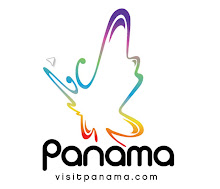Panama has always been a crossroads between cultures, thus earning us the nickname “melting pot”. With a population of almost 3 million people, 67% of it is made up of mestizos (Amerindian mixed with white) and mulattos (white mixed with black); 14% black; 10% white; and 6% Amerindian (indigenous or natives) and a 3% is made up of various ethnic backgrounds. This mix is particularly rich because of culture and traditions it helped establish, each one still respected by Panamanians and foreigners alike.
As a country that respects the right to worship or belief, our country’s population is comprised of an 85% Roman Catholic majority, which is why Christmas and Carnival, that colorful and hectic four-day festivity that precedes Lent, are extensively celebrated in Panama. The Evangelical Christians are next, representing 10 % of the population. The rest of the religious groups are divided into Judaism, Buddhism, Hinduism, the Christian Orthodox and other groups derived from protestant Christianity, such as Jehova’s Witnesses and the Seventh-day Adventists.
Panama’s seven indigenous groups settlements are scattered in semi-autonomous territories. The Ngöbe, Buglé, Naso-Teribe and Bri-bri are the most representative native group in the Western part of the country, in the provinces of Chiriquí,
Bocas del Toro
and Veraguas.
Together, they comprise 70% of the country’s indigenous population. The Eastern side of the Panama is inhabited by the Emberá and Wounaan natives, in the Darien province, and by the Kunas, in the Kuna Yala Region.
Like their ancestors, the Emberá and Wounaan have lived in the tropical forests for centuries. They show an innate understanding and respect for nature, and their wood carving and weaving skills are exquisite. The Kunas, on the other hand, settled along the Caribbean coast and on the islands, and are known for having a stronghold on their traditions and for their molas, handcrafts made from appliqués set on fabric.
The descendants of African immigrants settled in the Central Regions of Panama and in the Darien Province, where the rhythm of the Bullerengue and the Bunde still evoke the origin of their traditions. Initially, they were brought to the isthmus by the Spanish pioneers to work in the sugar cane plantations. A second migratory wave at the beginning of the 20th century gave way to the blacks from the Antilles to work in the construction of the Panama Canal. This second ethnic group was English speaking and settled in Panama City, Colon and Bocas del Toro. The mestizos and mulattos are the result of years of ethnic and cultural mixing, dispersed throughout Panama. Their folklore is expressed through its music and dances; regional and traditional foods such as arroz con pollo (rice chicken) and sancocho de gallina (chicken soup), while their festive disposition shines through in fairs and festivals, as in their well-known friendliness to foreigners.
Panama has always been and always will be a meeting point for all races and ethnicities. Today, the country is accessible to travelers from any part of the world, always making them feel at home, boasting its traditions and its constant desire to evolve as a culture.
Posted via email from visitpanama's Blog For Official Information About Panama's Ministry of Tourism

No comments:
Post a Comment